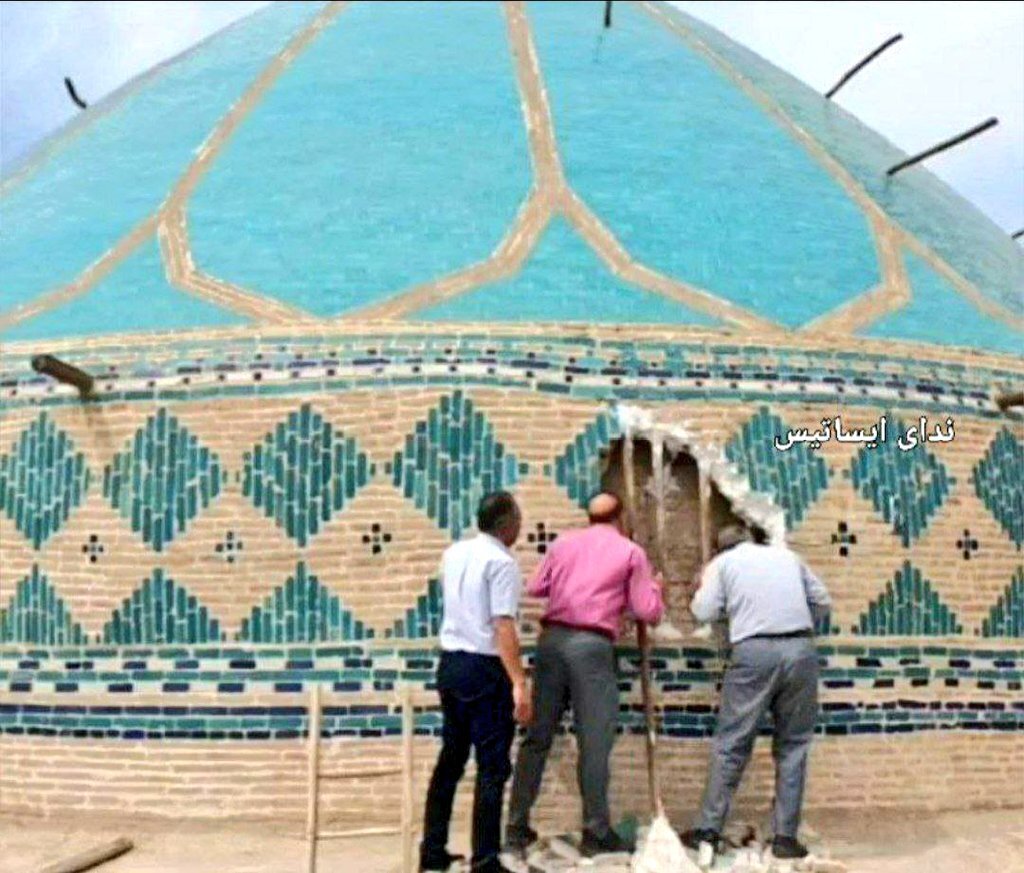Amir Chakhmaq: 19th-century dome partially collapses

TEHRAN – The dome of Amir Chakhmaq mosque has partially collapsed in Yazd, where the 19th-century monument stands tall as one of the drop-dead travel destinations in central Iran.
The partial collapse of the dome of Amir Chakmaq mosque has been examined by a team of cultural heritage experts, YJC quoted Yazd province’s tourism chief as saying on Thursday.
Technical coordination has been made to safeguard and restore the dome, Ahmad Akhundi said.
The mosque belongs to the Amir Chakhmaq complex that also embraces a caravanserai, bathhouse, cold-water well, and a Tekkieh where Shiite Muslims come together to observe special religious ceremonies, all of which have been designed following traditional layout principles.
A three-story building of the complex is noted for its eye-catching rows of symmetrical, sunken alcoves that are perfectly lit up following the sunset.
The perfectly proportioned niches on the façade may seem at their best and most photogenic late in the afternoon when the towering exterior appears to glow against the darkening sky and copper-colored sunlight is captured within each alcove.
A pedestrianized square overlooking the complex is usually full of visitors. It is landscaped with a vast pool, illuminated fountains, well-manicured trees and shrubs that lend an attractive foreground to the splendid vista at night. Underneath the complex is a small bazaar, with rows of two-story arcades.
Yazd is usually referred to as a delightful place to stay, or a “don't miss” destination by almost all of its visitors. Partially covered alleyways, together with streets, public squares, and courtyards, contribute to a pleasant urban quality. The city escaped the modernization trends that destroyed many traditional earthen cities.
It survives today with its traditional districts, the qanat system, traditional houses, bazaars, hammams, water cisterns, mosques, synagogues, Zoroastrian temples, and the historic garden of Dolat-Abad. The city enjoys the peaceful coexistence of three religions: Islam, Judaism, and Zoroastrianism.
Water is brought to the city by the qanat system. Each district of the city is built on a qanat and has a communal center. The concept of Persian Qanat was registered on the UNESCO World Heritage list in 2016, as they provide exceptional testimony to cultural traditions and civilizations in desert areas with an arid climate.
The use of earth in buildings includes walls and roofs by the construction of vaults and domes. Houses are built with courtyards below ground level, serving underground areas. Wind catchers, courtyards, and thick earthen walls create a pleasant microclimate.
AFM
Leave a Comment